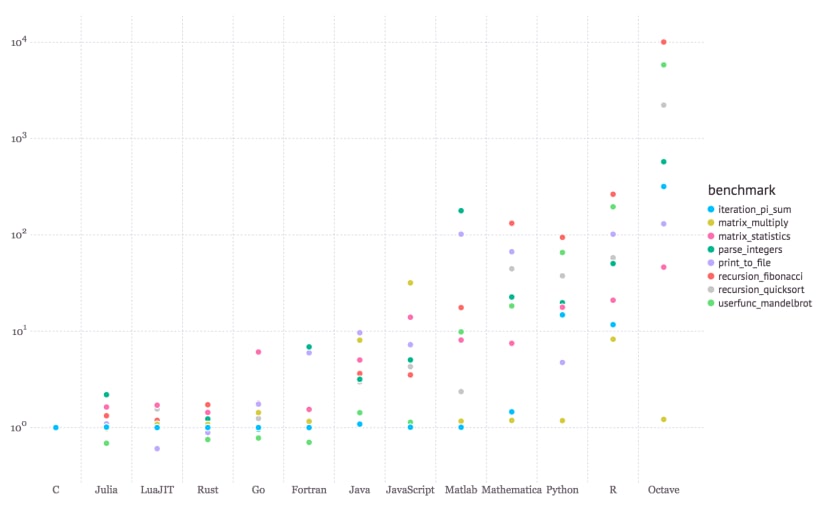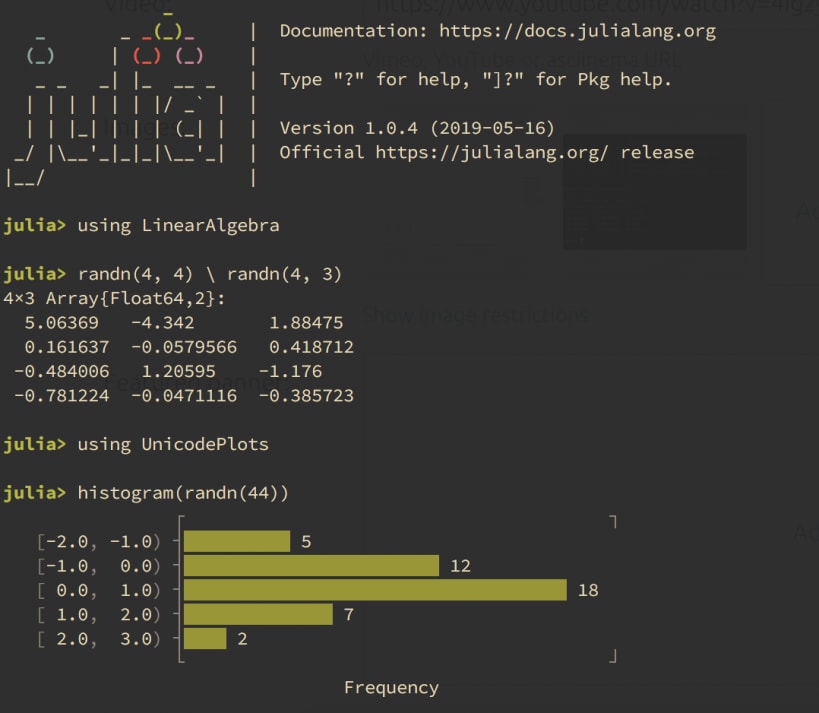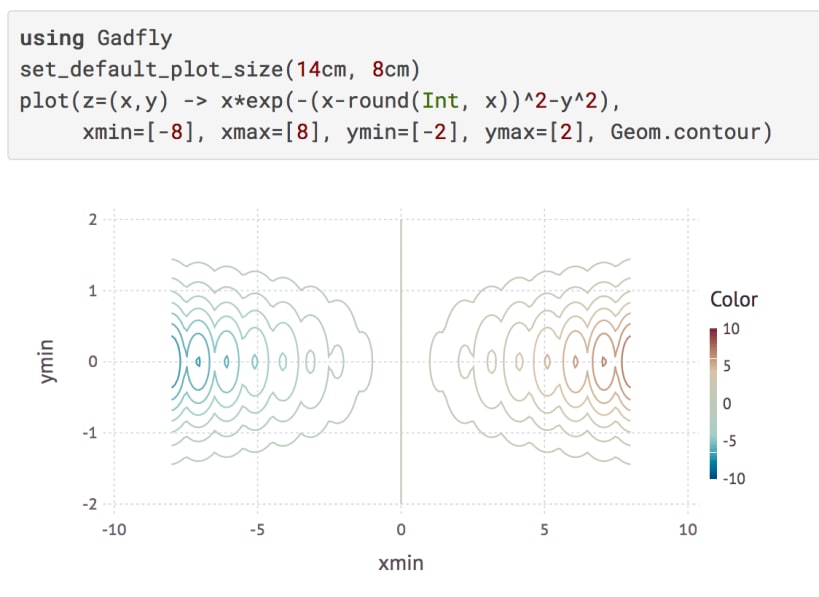




Julia is a high level, high performance, dynamic language for technical computing.
Julia is fast: It was designed from the beginning for high performance. Julia programs JIT compile to efficient native code for multiple systems and architectures via LLVM.
Julia is general: It uses multiple dispatch as a paradigm, making it easy to express object oriented and functional programming patterns. The standard library provides asynchronous I/O, process control, logging, profiling, a package manager, and more. In addition, there is a rich ecosystem of over 10,000 packages and counting across a number of domains.
Julia is easy to use: It has high level syntax and is dynamically typed, providing accessibility for programmers of all backgrounds and experience levels, and making it feel like a scripting language.
Julia is optionally typed: It has an extensive, flexible, and extensible type system, and type declarations can be used to clarify and solidify programs. But type declarations are not required for general use.
Julia is open source: It's free for anyone to use, and the source code is publicly available under a permissive license on GitHub (https://github.com/JuliaLang/julia).
You are about to open
Do you wish to proceed?
Thank you for your report. Information you provided will help us investigate further.
There was an error while sending your report. Please try again later.
Snaps are applications packaged with all their dependencies to run on all popular Linux distributions from a single build. They update automatically and roll back gracefully.
Snaps are discoverable and installable from the Snap Store, an app store with an audience of millions.

Snap can be installed from the command line on openSUSE Leap 15.x and Tumbleweed.
You need first add the snappy repository from the terminal. Choose the appropriate command depending on your installed openSUSE flavor.
Tumbleweed:
sudo zypper addrepo --refresh https://download.opensuse.org/repositories/system:/snappy/openSUSE_Tumbleweed snappy
Leap 15.x:
sudo zypper addrepo --refresh https://download.opensuse.org/repositories/system:/snappy/openSUSE_Leap_15.6 snappy
If needed, Swap out openSUSE_Leap_15. for, openSUSE_Leap_16.0 if you’re using a different version of openSUSE.
With the repository added, import its GPG key:
sudo zypper --gpg-auto-import-keys refresh
Finally, upgrade the package cache to include the new snappy repository:
sudo zypper dup --from snappy
Snap can now be installed with the following:
sudo zypper install snapd
You then need to either reboot, logout/login or source /etc/profile to have /snap/bin added to PATH.
Additionally, enable and start both the snapd and the snapd.apparmor services with the following commands:
sudo systemctl enable --now snapd
sudo systemctl enable --now snapd.apparmor
To install julia, simply use the following command:
sudo snap install julia --classic
Browse and find snaps from the convenience of your desktop using the snap store snap.

Interested to find out more about snaps? Want to publish your own application? Visit snapcraft.io now.